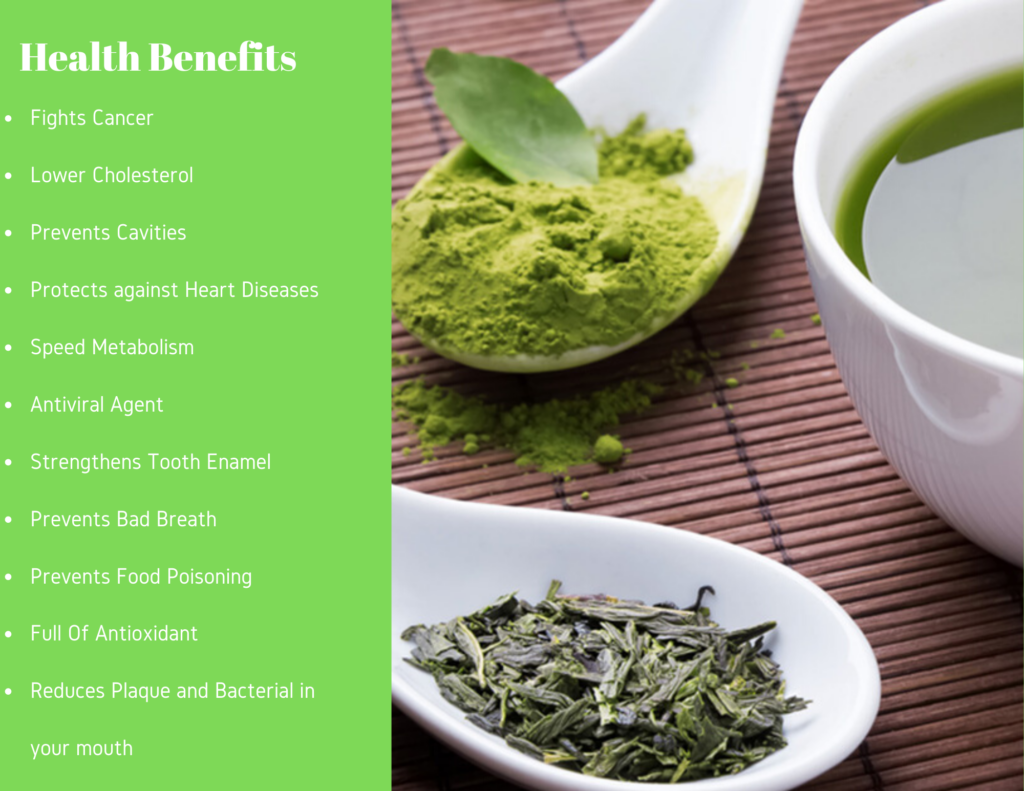
Although tea drinking has been associated with health benefits for centuries, only in recent years have its medicinal properties been investigated scientifically. One must recognize the healthy power of tea while getting the most out of their cups.
For years different cultures have touted the health benefits of tea, and more specifically, the health benefits of green tea. It is no wonder that researchers are trying to figure out why tea is so good for us. In this article, we explain how green tea is different and highlight the top five health benefits of green tea.
Green Tea
Tea comes in just behind water as the most consumed beverage in the world. All tea comes from the dried leaves of the Camellia sinensis bush. Although it is available in many different varieties, non-herbal teas fall into four basic categories: black, green, oolong and white.
Many of the health benefits come from tea’s powerful antioxidants, called flavonoids. There are more than 6,000 types of flavonoids, and one of the most common categories are catechins. Much of the research on tea has focused on green tea because when compared to black tea, green tea contains 3.5 times more catechins.
Green tea is made from mature tea leaves and is less processed than other teas. Since the leaves have not been fermented, but instead are dried and steamed, green tea can keep its high level of catechins. Epigallocatechin gallate (EGCG) is the most common catechin found in green tea and therefore has been the most researched.
You can consume green tea as a hot or cold beverage. It is also available in a more concentrated form called an extract. A green tea extract means that the active ingredients found in the green tea, such as the catechins, have been removed from the dried green tea leaves to produce a more concentrated form. Extracts are available in liquid, powder, capsule, or tablet forms.
Some Important Cautions About Green Tea
You can consume the beneficial nutrients of green tea in many different forms such as teas, capsules, liquid extracts, and powders. It is important to remember that not all green tea products are created equally. Some types may contain only dry green tea leaves, while others may contain concentrated forms of one or more catechins. The number of catechins can vary significantly among green tea products. For example, research presented at the American Chemical Society found that some 16-ounce bottled teas contained fewer polyphenols than one cup of brewed tea.
Also, it is important to note that green tea can contain a substantial amount of caffeine unless you choose decaffeinated green tea products. Too much caffeine may make some people feel shaky, cause headaches, and interfere with sleep. The caffeine contained in one cup of green tea can vary according to the length of infusing time and the amount of tea infused.
The National Center for Complementary and Integrative Health reassures us that green tea is safe when consumed in moderation as a beverage. Green tea extract has been used safely for up to 2 years in various research studies in doses between 250–500 mg. There are some reports of mild liver problems by people taking green tea extracts in higher doses over the long term.
Health Benefits of Green Tea



Valuable information. Lucky me I found your site by accident, and I am shocked why this accident did not happened earlier! I bookmarked it. Willi Danie Murray Oona Rand Bel
I absolutely love your site.. Very nice colors & theme. Did you make this web site yourself? Ailis Bond Venice
Incredible quest there. What happened after? Take care! Kara-Lynn Magnum Giraldo